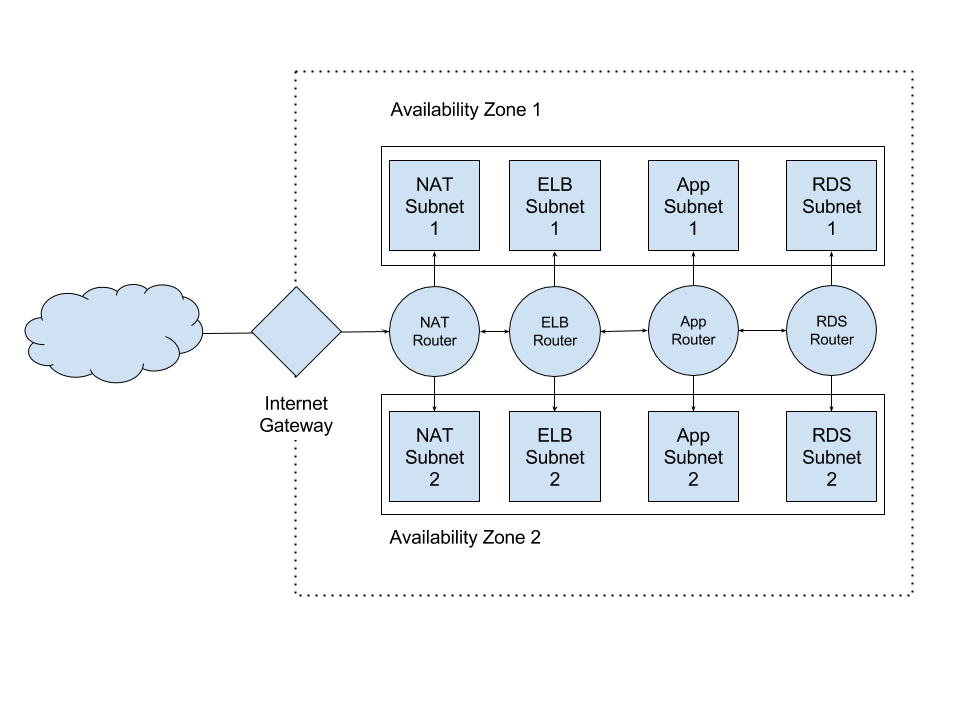In today's digital age, the remoteIoT VPC network has become an indispensable part of modern networking infrastructure. As organizations increasingly adopt cloud computing and IoT technologies, understanding and implementing a secure and efficient VPC network has never been more crucial. This article delves into the intricacies of remoteIoT VPC networks, providing you with actionable insights to optimize your network architecture.
The integration of IoT devices into virtual private cloud (VPC) networks is transforming how businesses operate. A well-structured remoteIoT VPC network ensures seamless communication between devices, enhances security, and improves scalability. Whether you're a network administrator, IT professional, or business owner, this guide will equip you with the knowledge needed to harness the full potential of remoteIoT VPC networks.
This article explores the fundamentals of remoteIoT VPC networks, advanced configuration techniques, and best practices for securing your network. By the end of this guide, you'll have a comprehensive understanding of how to design, implement, and manage a robust remoteIoT VPC network that aligns with your organizational goals.
Read also:Bank Of California A Comprehensive Guide To Its History Services And Impact
Table of Contents
- Introduction to RemoteIoT VPC Network
- Benefits of Using RemoteIoT VPC Networks
- Understanding the Architecture of RemoteIoT VPC Networks
- Securing Your RemoteIoT VPC Network
- Configuration Best Practices
- Ensuring Scalability in RemoteIoT VPC Networks
- Troubleshooting Common Issues
- Tools for Managing RemoteIoT VPC Networks
- Case Study: Successful Implementation of RemoteIoT VPC Networks
- The Future of RemoteIoT VPC Networks
Introduction to RemoteIoT VPC Network
A remoteIoT VPC network is a specialized type of virtual private cloud network designed to support Internet of Things (IoT) devices. It enables secure, private communication between IoT devices and cloud resources, ensuring data privacy and network performance. This section provides an overview of the key concepts and components of remoteIoT VPC networks.
Key Components of RemoteIoT VPC Networks
- Subnets: Divides the network into smaller segments for better control and management.
- Gateways: Facilitates communication between the VPC and external networks or the internet.
- Security Groups: Acts as a virtual firewall to control inbound and outbound traffic.
- Route Tables: Defines the routing rules for network traffic within the VPC.
Benefits of Using RemoteIoT VPC Networks
Implementing a remoteIoT VPC network offers numerous advantages, including enhanced security, improved scalability, and better control over network resources. Below are some of the key benefits:
- Security: Protects sensitive data by isolating IoT devices from public networks.
- Scalability: Easily accommodates growing numbers of IoT devices and traffic.
- Cost Efficiency: Optimizes resource usage and reduces operational costs.
- Flexibility: Allows seamless integration with existing network infrastructures.
Understanding the Architecture of RemoteIoT VPC Networks
A well-designed architecture is the foundation of a successful remoteIoT VPC network. This section explores the essential elements and design principles to consider when building your VPC network.
Design Principles
- Modularity: Design the network in modular components for easier management.
- Redundancy: Implement redundant systems to ensure high availability.
- Isolation: Separate critical resources to minimize risk exposure.
Securing Your RemoteIoT VPC Network
Security is paramount when dealing with IoT devices and cloud networks. This section outlines the best practices for securing your remoteIoT VPC network and protecting sensitive data.
Encryption and Authentication
- Use end-to-end encryption for all data transmissions.
- Implement strong authentication mechanisms, such as multi-factor authentication (MFA).
Configuration Best Practices
Proper configuration is essential for maximizing the performance and reliability of your remoteIoT VPC network. Follow these best practices to ensure optimal network performance:
Read also:Charleston Indoor Swap Meet Directory Your Ultimate Guide To Thrift Shopping
- Regularly update security groups and access control lists (ACLs).
- Monitor network traffic and logs for suspicious activity.
Ensuring Scalability in RemoteIoT VPC Networks
As your IoT ecosystem grows, your VPC network must scale accordingly. This section discusses strategies for ensuring scalability and handling increased traffic loads.
Auto-Scaling Groups
Implement auto-scaling groups to automatically adjust resources based on demand, ensuring consistent performance and minimizing downtime.
Troubleshooting Common Issues
Even the best-designed networks can encounter issues. This section provides guidance on identifying and resolving common problems in remoteIoT VPC networks.
Network Connectivity Issues
- Check route tables for misconfigurations.
- Verify security group rules to ensure proper access.
Tools for Managing RemoteIoT VPC Networks
Several tools are available to help manage and monitor remoteIoT VPC networks effectively. Below are some of the most popular options:
- AWS Management Console: Provides a user-friendly interface for managing AWS VPC resources.
- CloudWatch: Offers monitoring and logging capabilities for your VPC network.
Case Study: Successful Implementation of RemoteIoT VPC Networks
This section presents a real-world example of how a company successfully implemented a remoteIoT VPC network, highlighting the challenges faced and the solutions applied.
Company Overview
A global manufacturing firm adopted remoteIoT VPC networks to enhance its supply chain management system. By integrating IoT devices with a secure VPC network, the company achieved significant improvements in operational efficiency and data security.
The Future of RemoteIoT VPC Networks
As technology continues to evolve, remoteIoT VPC networks will play an increasingly critical role in shaping the future of networking infrastructure. This section explores emerging trends and innovations in the field.
Edge Computing Integration
Combining edge computing with remoteIoT VPC networks can significantly reduce latency and improve real-time data processing capabilities.
Conclusion
In conclusion, mastering the remoteIoT VPC network is essential for organizations looking to leverage the power of IoT and cloud computing. By following the guidelines and best practices outlined in this article, you can design and implement a secure, scalable, and efficient remoteIoT VPC network that meets your business needs.
We encourage you to share your thoughts and experiences in the comments section below. Additionally, feel free to explore other articles on our site for more insights into networking and IoT technologies. Together, let's build a smarter, more connected future!


